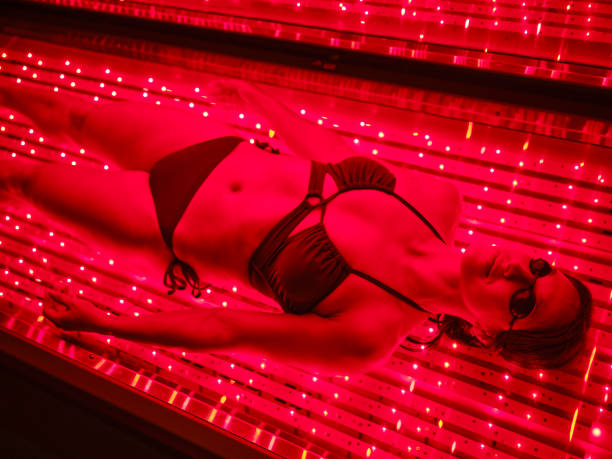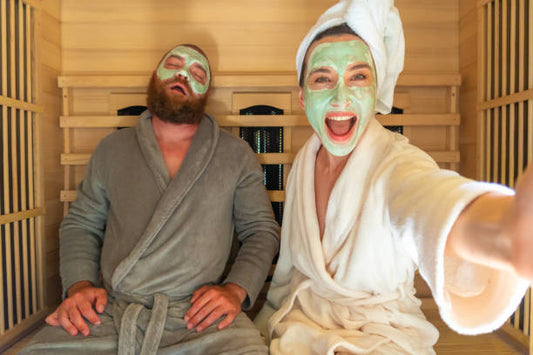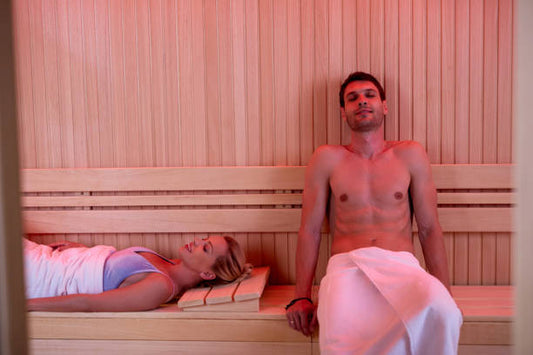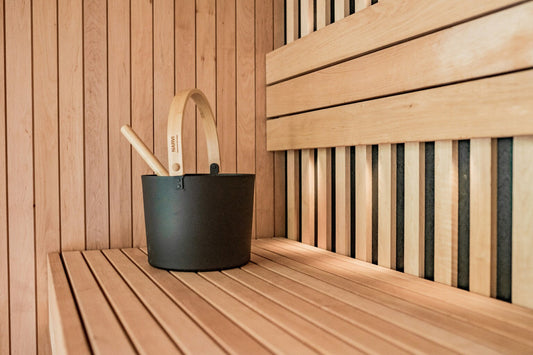
Can Red Light Therapy Replace Your Skincare Routine?
With increasing consumers being watchful about what they put on their skin, the demand for non-surgical technology like red light has taken off. Yet, one nagging question still lingers: can red light therapy be a standalone treatment, or must it be part of a comprehensive skincare routine? The answer is not as straightforward as it may appear. Let's discover how red light is incorporated in contemporary skincare and which steps you must retain — and which you can do without.
Cleansing: An Unavoidable First Step
Your skin comes into contact with dirt, oils, bacteria, and pollutants around the clock. These impurities accumulate and plug pores, creating irritation and blemishes. Whether or not you incorporate red light into your daily regimen, cleansing is non-negotiable.
A clean surface allows for greater penetration, not only of skin care but of light therapy, as well. Red light penetration may be blocked by makeup, SPF, or residue on the skin, decreasing its ability to affect the underlying layers. Utilise gentle, non-drying cleansers that will not strip away the skin's natural oils. Avoid foaming cleansers with sulphates and instead look for moisturising agents like glycerin or oat extract.
Double cleansing can be beneficial for some individuals, particularly those who use makeup or sunscreen every day. Double cleansing means applying an oil-based cleanser followed by a water-based cleanser. Clean skin is the most important thing, no matter how advanced your skincare equipment gets.
Moisturisers: Supporting Skin Structure
After exposure to red light, the majority of users comment on improved skin tone and texture. But that is still not erasing the need for moisture. Red light treatments are ideally followed by moisturising.
Washing the skin strips away natural oils, and moisturising after re-establishes the barrier and holds in moisture. Apply non-comedogenic products that include humectants like hyaluronic acid or glycerin. They draw moisture into the skin and stop water from being lost transepidermally.
Natural oils like jojoba, squalane, or rosehip oil may be suitable alternatives for chem-free users. The secret is to apply moisturisers after the red light treatment, not before it — pre-applying moisturisers might disrupt the absorption of the light.
UV Protection Is Still Important
It is tempting to skip sunscreen when adopting a red light routine, especially if your skin does feel more robust. But UVS are still the largest cause of premature aging and skin harm. Even on overcast days, UVA and UVB radiation filter through the atmosphere and affect skin well-being.
Red light treatments don't substitute for daily sunscreen. Sunscreen becomes more crucial to maintain the gains you make through regular therapy. Use a broad-spectrum SPF 30 or higher each morning, especially after any morning red light session. Mineral sunscreens with zinc oxide or titanium dioxide, if you're opting out of synthetic chemicals.
Timing Is Everything
Most treatments for the skin can respond adversely to red light if not planned effectively. Several ingredients will photosensitise the skin, leaving it more prone to being irritated or sensitised. Retinoids, alpha hydroxy acids (AHAS), beta hydroxy acids (BHAS), and benzoyl peroxide all predispose the skin to treatment or immediately after red light treatments.
If you're using active treatments, space them out at least a few hours from red light. It's best to use actives in the morning if you use red light at night, and vice versa. Monitor your skin's response, and reduce the frequency of use if sensitivity arises.
Know When to Skip Additional Treatments
While red light is generally gentle on the skin, when used in conjunction with other aggressive treatments, overexposure can happen. Chemical peels, dermabrasion, microneedling, and abrasive exfoliants should be avoided on the same day as a treatment of red light. Exposing your skin to multiple stressors can cause inflammation and disruption of your skin barrier.
Plan your skincare week. When you're using professional treatments or exfoliants, choose alternate days for red light treatment. Always have a day or two between such treatments to give your skin time to heal and reboot.
Sensitive Skin Needs Simplicity
Sensitive skin individuals typically benefit the most from minimising the number of their skincare treatments. Red light here can also be an additive, helping reduce one's dependency upon a high concentration of multiple actives. Decreasing such a reliance causes a regimen to become easier to do and less conducive to bad responses.
Practice the use of fragrance-free, hypoallergenic products and minimise product change. Prioritise barrier-supportive ingredients like ceramides, niacinamide, and colloidal oatmeal. Hydrate and wash the skin regularly, and use red light as a low-level daily intervention to maintain a balance and resistant skin.
The Role of Diet and Hydration
Healthy skin isn't just about what you put on the surface. What you put in influences skin health at the cellular level, as well. Eating a diet high in antioxidants, omega-3 fatty acids, and vitamins benefits the same cellular processes red light does.
Hydrate yourself by drinking water during the day, and attempt to incorporate foods like salmon, avocados, nuts, seeds, leafy greens, and berries. Eliminating sugar and processed foods may also reduce inflammation and help with collagen production.
Red light works best when your body has everything it needs to repair and renew. Nourish from the inside with wholesome food, and let your skincare mirror inner health.
When Minimalism Meets Technology
Skincare minimalism is where it's at, and red light fits in seamlessly with that mentality. It won't get rid of all your skincare procedures, but it allows you to eliminate unnecessary products. By targeting skin health at the cellular level, red light supports processes like repair, regeneration, and balancing — no chemicals or physical exfoliants required.
However, the principles of cleaning, moisturising, and sun protection are not to be argued with. Red light is a vehicle that enhances these steps, not one that supplants them.
Smart Layering: Product Order Matters
If you are using red light therapy in combination with a more comprehensive skincare regimen, consider your procedures. Start with a clean face, free of oils or serums that might inhibit light. Finish your treatment by using moisturising and hydrating products.
Do not use occlusive products or heavy creams before red light unless instructed by a professional. Their presence can reflect or scatter the light, restricting its absorption. Bare skin maximises each session's potential.
Monitoring Progress and Making Adjustments
Skin care is not a static process. Your skin has changing needs with time, climate, stress, hormonal imbalances, and age. Continuously monitor how your skin is reacting to red light. Make the frequency of sessions, product mixes, or timing of application vary as a function of how your skin looks and feels.
Keep a skin care journal if necessary. Record what works best, which ingredients induce sensitivity, and which seasons make your skin do specific things. Tailoring is most important.
Final Thoughts: Red Light and Routine, Not Replacement
Rather than replacing your skincare routine, red light should be seen as an advanced tool that elevates it. It enhances what you’re already doing right and can reduce your dependence on aggressive ingredients. But no single modality, however advanced, can completely replace foundational skincare steps.
Continue to be consistent with cleansing, moisturising, and protecting your skin, and adding red light as a regular aspect of your self-care regimen, not in addition to the basics. By incorporating mindful product choice of kylin, smart scheduling, and a balanced way of life, you can establish a skincare routine that's easy, effective, and extremely sensitive to your skin's actual needs.







